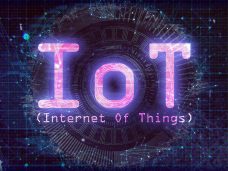The IoT refers to the internet of things. The excitement about IoT came alive when operators discovered that unlike the traditional SCADA and BMS (Building Management Systems), IoT offers a wide platform for saving. Although BMS is a very accurate technique that has proven itself worthy of constant use in commercial property and smaller multi-site applications, the technique cannot be used in situations involving areas that are highly populated.
Also, the technique is limited in its ability to gather valuable data from various new IoT tech that continues to surface.
The new loT platforms infiltrating the markets offer a good solution to this problem while the BMS is still allowed to retain control of its trade environment.
Complexities solved by IoT platforms
In a multi-site roll-out, there exist several vendors of equipment all having various generations of models. Each of them requires a customized on-site configuration, and bridging of hardware technologies for effective monitoring as each model of equipment communicates uniquely.
IoT platforms operate on the basis of ambient communication and are not tied to a single trade or vendor by design. The goal is to achieve interconnectivity and this results in ridding of data silos in buildings.
IoT platforms are built to handle diverse data in massive scales, it is very easy and simple to install. It also doesn’t depend on an on-site start-up or customized programming to bridge hardware. They work by extracting data from in-built protocols and subsystems allowing management, monitoring and remote provisioning from cloud space. It is also flexible to control and monitor.
IoT platforms collect, organize and deliver all data from connected sites and hardware. At each site, a simple appliance is connected to the data sources at each site, then connected to the internet and finally powered. Multi-site facility operators are now able to update and make changes remotely using these platforms without employing the labor of engineers or technicians to configure.
IoT platforms provide real-time scalable data storage of all data in the cloud. Data is tagged in an orderly manner into a combined dataset. This acts as a solution to the complexities caused by different brands of equipment that speak different languages.
IoT platforms do not snob hardware
BMS, SCADA, and other custom solutions could be very stiff when it comes to hardware connections.
IoT platforms offer complete monitoring and management from a single application interface permitting facility operators to easily adapt changes in their visualization tools or analytic package they want without having to tamper with the software application of various types of equipment.
Cloud-based data collection also allows several tools like AI, visualization, and analytics to be united via a single source API.
Actionable analytics
Deployment of IoT platforms results in more flexibility for the monitoring of geographically distributed sites. IoT microservice analytics are also allowed to run on the data set for various purposes. The platform assembles all united data into buildings on a scale. This results in the need for building technologies as an important part of the business operation.
While SCADA and BMS solutions continue to be valuable to facility operations and maintenance, IoT platforms enhance the performance of these traditional trade silos.
In today’s world, there is a need for multisite facility operators to stay up to date and equipped with the best tools to remain competitive and relevant In order to maximize profitability.
IoT platforms can be introduced to existing or new systems and applications without total destruction or redesign.



